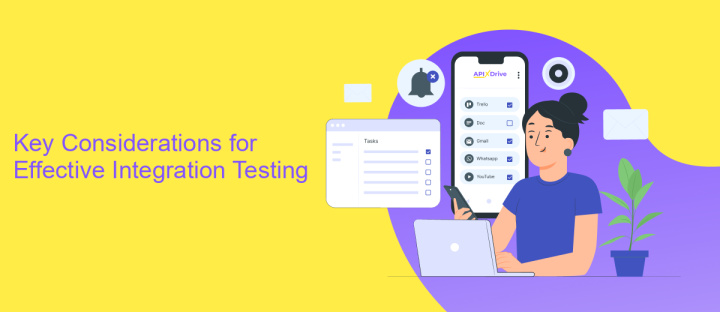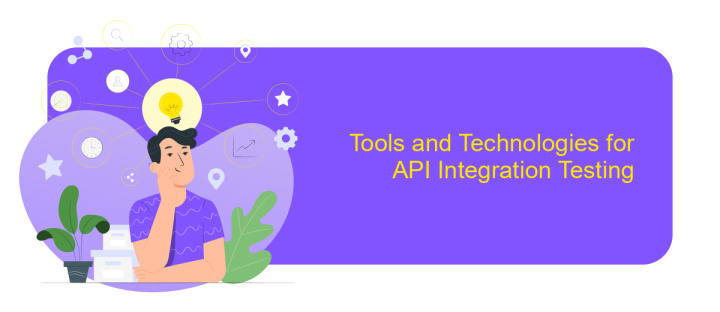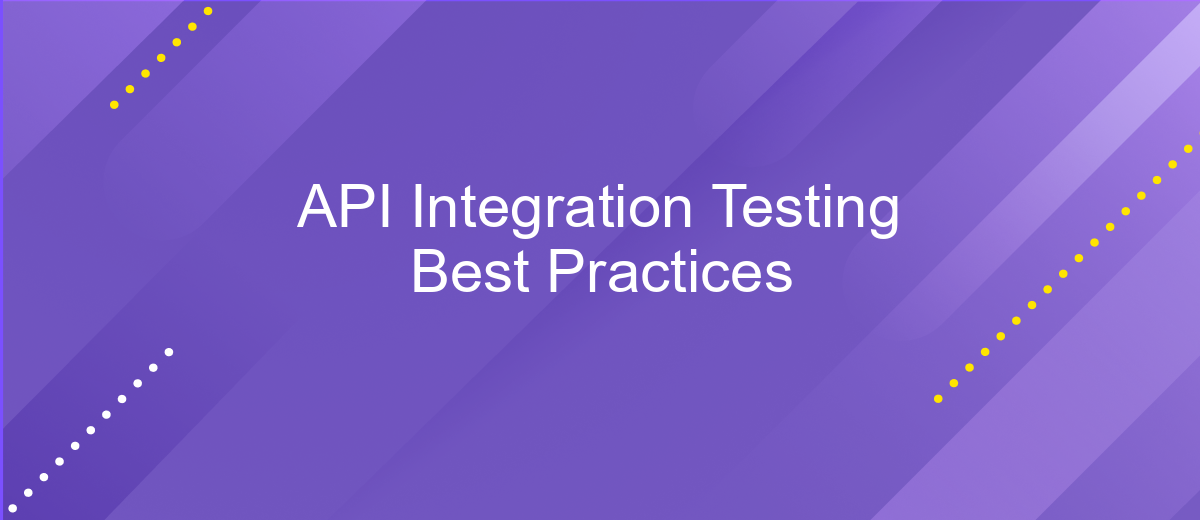API Integration Testing Best Practices
API integration testing is a crucial aspect of modern software development, ensuring seamless communication between different software components. This process verifies that APIs function correctly, meet performance expectations, and handle edge cases gracefully. By implementing best practices in API integration testing, developers can enhance the reliability, security, and efficiency of their applications, ultimately delivering a superior user experience. This article explores key strategies to optimize your API testing approach.
Understanding API Integration Testing
API integration testing is a crucial process in software development that ensures different software components interact seamlessly. It involves testing the APIs directly to verify their functionality, reliability, performance, and security. This type of testing is vital for identifying issues early in the development cycle, reducing the risk of defects in production.
- Validate data exchange between different systems to ensure correct data transfer.
- Check the API's response time and performance under various loads.
- Ensure the API handles errors gracefully and returns appropriate error messages.
- Test the API's security features to protect against unauthorized access and data breaches.
- Verify the API's compatibility with different devices and platforms.
By focusing on these aspects, API integration testing helps in delivering robust and reliable software applications. It ensures that all parts of the system communicate effectively, providing a seamless user experience. This testing is an essential part of the continuous integration and deployment process, supporting the rapid release of high-quality software.
Key Considerations for Effective Integration Testing

When conducting integration testing for APIs, it's crucial to ensure that all components communicate seamlessly. Begin by defining clear objectives and identifying the essential endpoints that require testing. This helps in outlining a comprehensive test plan that covers all possible scenarios. It's also vital to simulate real-world conditions as closely as possible, including handling of unexpected inputs and network failures. Prioritize the testing of critical paths and workflows to ensure that the core functionalities are robust and reliable.
Leveraging tools and services can significantly enhance the efficiency of your testing process. Consider using platforms like ApiX-Drive, which simplify the setup and management of integrations. ApiX-Drive allows for automated testing of data flows between different systems, ensuring consistency and reliability. Additionally, maintain clear documentation of all test cases and results to facilitate troubleshooting and future testing efforts. Regularly review and update your testing strategies to adapt to evolving requirements and technologies, ensuring that your API integrations remain effective and resilient.
Best Practices for Designing Integration Tests

Designing effective integration tests is crucial for ensuring that different components of a software system work together seamlessly. These tests help identify issues that may not be apparent when testing individual components in isolation. To create robust integration tests, it is important to follow certain best practices that enhance their reliability and efficiency.
- Define clear objectives for each test to ensure they validate specific interactions between components.
- Use realistic data and scenarios to mimic actual user interactions and edge cases.
- Isolate the environment to prevent external factors from affecting test outcomes, using mock servers or containers if necessary.
- Ensure tests are repeatable and provide consistent results across different environments and runs.
- Incorporate automated testing tools to facilitate regular and frequent execution of tests.
By adhering to these practices, developers can design integration tests that not only verify the correct functioning of interconnected components but also contribute to a more stable and reliable software product. This approach helps in early detection of integration issues, reducing the time and cost associated with post-deployment fixes.
Tools and Technologies for API Integration Testing

API integration testing is crucial for ensuring seamless communication between different software systems. Selecting the right tools and technologies can significantly enhance the efficiency and accuracy of the testing process. With a variety of options available, it's important to choose those that best align with your project's needs and goals.
Modern API testing tools offer a range of features, from automated test generation to comprehensive reporting. They facilitate the validation of API functionality, performance, and security, ensuring that integrations are robust and reliable. Leveraging these tools can streamline testing workflows and improve overall software quality.
- Postman: A popular tool for API development and testing, offering a user-friendly interface and powerful automation capabilities.
- SoapUI: A versatile tool for testing SOAP and REST APIs, known for its extensive feature set and ease of use.
- JMeter: An open-source tool for performance testing, suitable for evaluating the scalability of APIs under different load conditions.
- RestAssured: A Java library designed for testing RESTful services, providing a simple syntax for writing tests.
By integrating these tools into your testing strategy, you can ensure that your APIs meet the desired standards of performance and reliability. Continuous learning and adaptation to emerging technologies will further enhance your testing capabilities.
- Automate the work of an online store or landing
- Empower through integration
- Don't spend money on programmers and integrators
- Save time by automating routine tasks
Maintaining and Evolving Your Integration Tests
Maintaining and evolving your integration tests is crucial for ensuring the robustness of your API systems. As your application grows, so does the complexity of its integrations. Regularly review and update your tests to reflect changes in the API endpoints, data structures, and business logic. This proactive approach helps in identifying potential issues early and minimizes the risk of integration failures. Automated tools like ApiX-Drive can simplify this process by providing seamless integration and real-time monitoring, ensuring your tests remain relevant and effective.
Incorporating feedback loops is vital for evolving your integration tests. Engage with your development and QA teams to gather insights and identify areas for improvement. Use version control systems to track changes and maintain a history of test modifications. This practice not only enhances test coverage but also facilitates easier debugging and troubleshooting. By continuously refining your integration tests, you can ensure that they evolve alongside your application, providing a strong foundation for future development and innovation.
FAQ
What is API integration testing and why is it important?
What are some best practices for API integration testing?
How can I automate API integration testing?
What challenges might I face during API integration testing?
How can I ensure the reliability of my API integration tests?
Apix-Drive is a universal tool that will quickly streamline any workflow, freeing you from routine and possible financial losses. Try ApiX-Drive in action and see how useful it is for you personally. In the meantime, when you are setting up connections between systems, think about where you are investing your free time, because now you will have much more of it.


